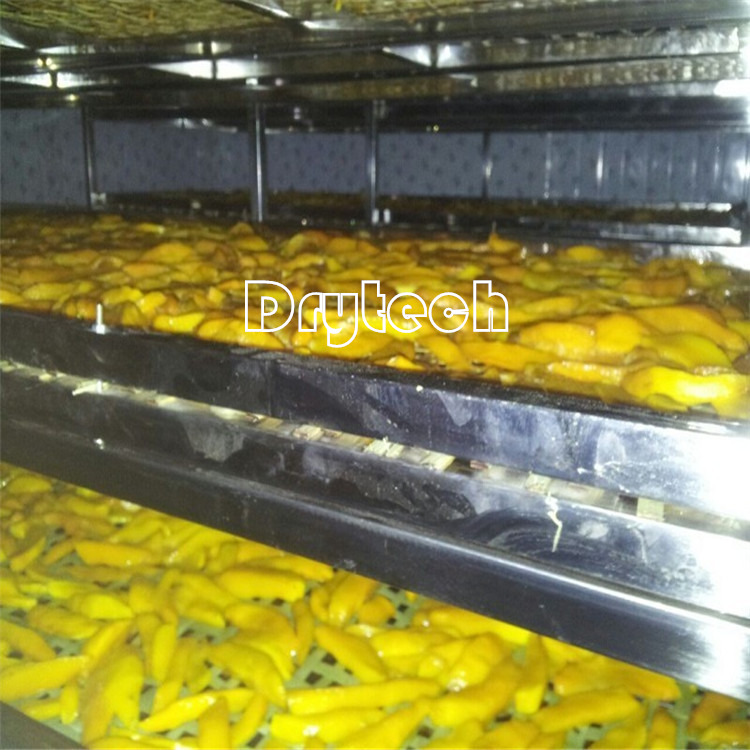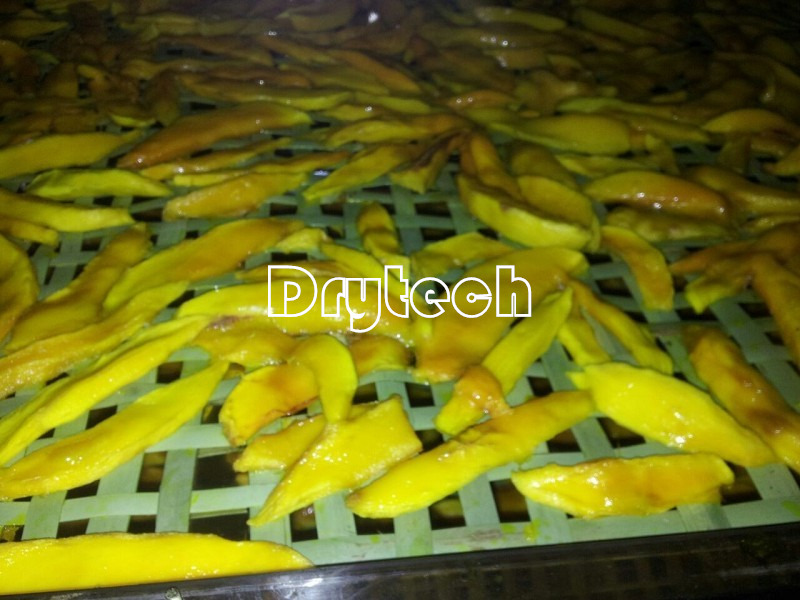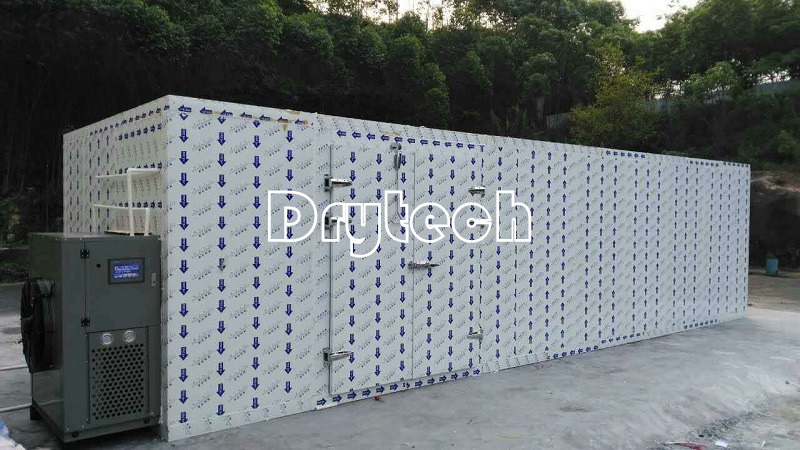Mango is ajuicy stone fruit (nucleus) from many tropical species of the flowering plantMango, which is mainly grown for consumption. Most of these species are foundin nature as wild mangoes, which belong to the genus Cashew. Mango is native toSouth Asia and has appeared in the world as “Ordinary Mango” or “Indian Mango”,making it one of the most widely grown fruits in the tropics. Other mangospecies (such as horse mango) are grown on a more local basis. It is thenational fruit of India and Pakistan, the national tree of Bangladesh, and the unofficialnational fruit of the Philippines. Mango is also grown in many countries inAfrica, such as Kenya, Côte d'Ivoire and so on.
Drytech mangodrying machine, Drytech mango dehydrator Drying processing

Mango flesh isjuicy, delicious and delicious. It has the taste of peach, apricot, plum andapple. For example, if you eat a few in the summer, you can thirst and quenchyour thirst. Because mangoes are inconvenient for fresh storage andlong-distance transportation, people often process it into canned sugar,candied fruit, fruit wine, dried fruit, jam, jelly and so on. Rising Thai MangoDrying Process Raw materials are selected from mature fresh mangoes such asLuzon Mang or Zihua Mang or Hainan Local Wild Mango, which is suitable forprocessing and good color. The first is the meat quality to improve the yield. Maturityis 8-9, and when the maturity is too low, the color and flavor of the mango arepoor. If it is too ripe, it is easy to be rotten. Wash and clean the mangoes inthe clear water tank one by one, further remove the unqualified fruits, andfinally pack them in plastic baskets according to the size and drain the water.Peeling and slicing manually cut off the outer skin with a stainless steelknife to remove the spotted nails. The surface is required to be smoothed andhas no obvious water chestnut. The outer skin must be cleaned, because the peelcontains more tannins. If it is not cut, browning is likely to occur duringprocessing, which affects the finished color. Peeled fruit Practical sharpblade longitudinally sliced to a thickness of about 8-10mm. The core of theremaining pulp can be sent to the pulp for juice. The color protectiontreatment uses a method of sulphur or sulfur leaching. Drying The raw materialafter the color protection treatment is placed on the drying rack evenly (thewater is immersed in the sulphur treatment), and dried in an oven. The initialtemperature of drying is controlled at 70-75 ° C, and the later control is at60-65 ° C. Pay attention to the operation of turning and returning to thedrying process. When softening and packaging the product to achieve themoisture content required for drying, it is generally about 15%-18%. Put theproduct in a closed container and let it soften for about 2-3 days to balancethe water content of each part. Soft texture for easy packaging.
 Call Us:
Call Us:  E-mail:
E-mail: 

 Address: Guangzhou City, Guangdong Province,P.R.China
Address: Guangzhou City, Guangdong Province,P.R.China
 TEL: +86-159-8924-9151/Whatsapp
TEL: +86-159-8924-9151/Whatsapp
 E-mail:
E-mail: